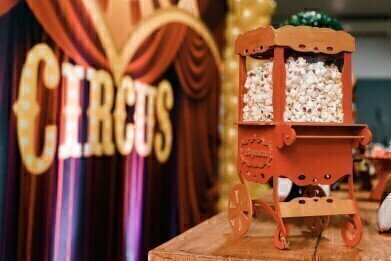News & Views
Why Does Popcorn Pop?
Feb 25 2015
Popcorn — what’s your favourite flavour? Toffee? Salted or sweet? Whichever flavour you like, chances are whenever you have been to the cinema you’ve been tempted at some point to buy a giant tub and happily munch it as you relax in your seat. But what is popcorn, where does it come from and why does it pop? Sit back, relax and grab a handful of popcorn as we discover more about this snack.
Where does Popcorn come from?
Popcorn comes from the kernels of a particular type of maize and is thought to have been first cultivated from various wild grasses by the Mesoamericans, in Mexico, over 4500 years ago.
Most of the popcorn grown in the world comes from the corn-belt region in the United States — a group of states that includes Iowa, Illinois, Nebraska and Minnesota. The relatively flat land and deep soils — with plenty of organic matter — means the region supports many crops, and is ideal for growing food staples like corn.
Growing Popcorn
Popcorn has been bred over many generations to enhance the genetic traits that are required to make good popcorn — which includes the ability to ‘pop’. Does this make popcorn genetically modified? Popcorn is harvested when the stalk and leaves are brown and dry, and the corn kernels have a moisture content in the range 16-20%. Harvesting is carried out by combine harvester which separates the kernels from the cob. The kernels are then air dried to the ideal moisture level of 14% — for optimum popping.
Popcorn has three main parts: endosperm, germ and pericarp — and all three are needed to make a healthy snack. The endosperm is a carbohydrate — made of starch granules — these contain the moisture that makes sweetcorn sweet and popcorn ‘pop’. The germ is the living part of the kernel while the pericarp is the outer shell — another carbohydrate but this time cellulose.
Popping Corn
A paper published in the journal Interface titled 'Popcorn: critical temperature, jump and sound’ has investigated why popcorn ‘pops’ — using high-speed cameras, thermodynamics and sound recordings. They have found that the pop is due to the water vapour — pressurized due to the heat — quickly escaping from inside the kernel. As the water escapes, the kernel acts as a sound chamber amplifying the sound waves and giving a pop.
When the popcorn ‘pops’ the starch from the endosperm expands to give the puffy white exterior of popped corn, leaving the pericarp visible as the darkened centre of the popcorn. The water content of 14% and an optimum temperature of 180?C produce the best conditions for popping corn.
Because popcorn is a whole grain — containing the whole kernel including the bran and germ — it is healthy and nutritious. Popcorn is a good source of carbohydrates that is low in calories, and because it contains the germ and bran, it is a good source of fibre.
So enjoy your popcorn — but hold the flavourings and salt to enjoy a healthy and nutritious snack.
Digital Edition
Lab Asia 31.2 April 2024
April 2024
In This Edition Chromatography Articles - Approaches to troubleshooting an SPE method for the analysis of oligonucleotides (pt i) - High-precision liquid flow processes demand full fluidic c...
View all digital editions
Events
Apr 28 2024 Montreal, Quebec, Canada
May 05 2024 Seville, Spain
InformEx Zone at CPhl North America
May 07 2024 Pennsylvania, PA, USA
May 14 2024 Oklahoma City, OK, USA
May 15 2024 Birmingham, UK


















